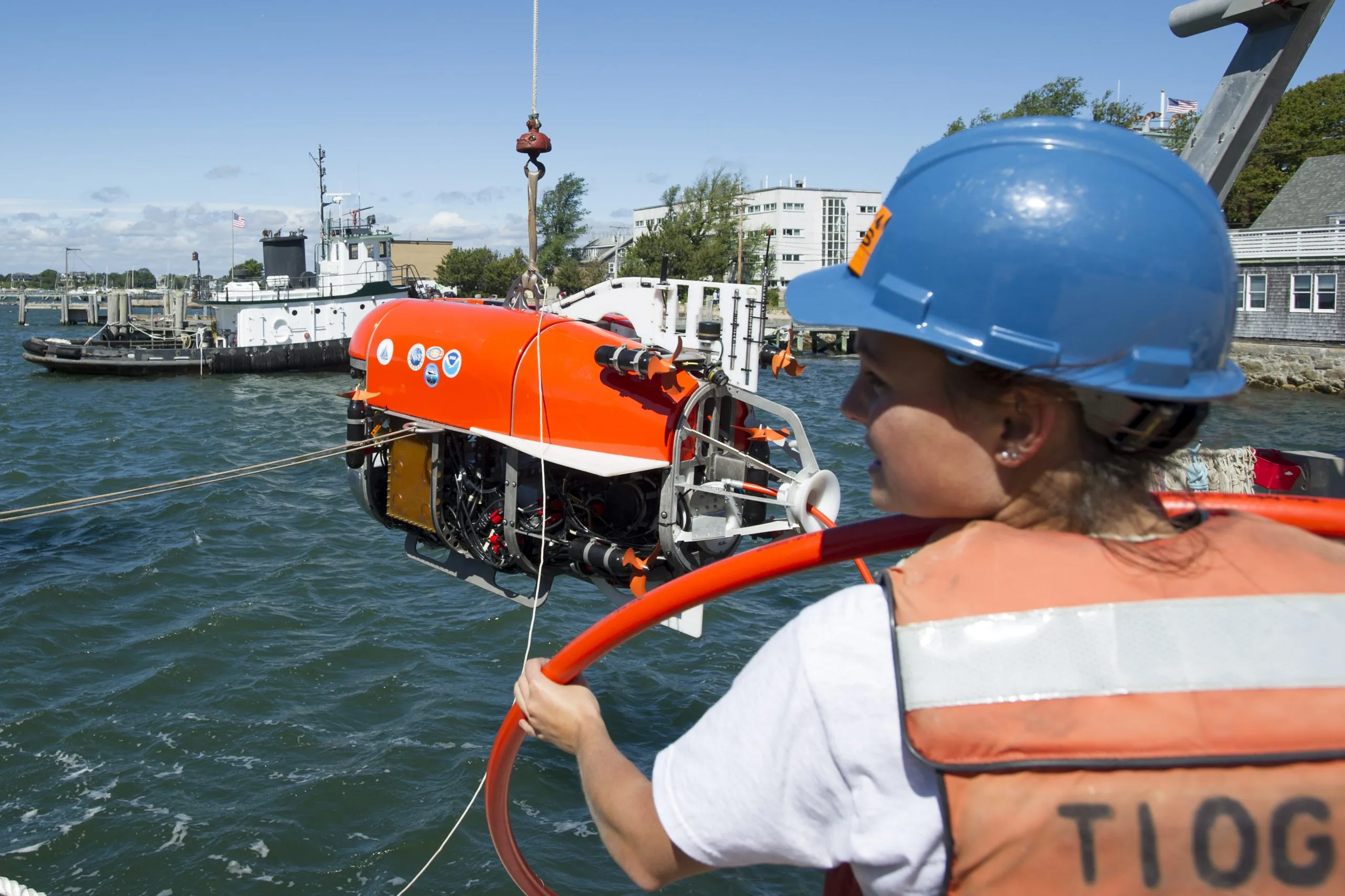News
SEA teams with WHOI for high school robotics cruise

This month, students from Massachusetts high schools will set sail aboard a tall ship to gain a first-hand introduction to underwater research technology with the help of engineers from Woods Hole Oceanographic Institution (WHOI) and scientists from Sea Education Association (SEA).
Designed to coincide with high school April breaks, the four-day offshore voyage sails from Miami, Florida to Charleston, South Carolina from April 17th to 20th aboard Sea Education Association’s flagship, the SSV Corwith Cramer, a 134-foot tall ship ocean research vessel.
The students will explore offshore marine environments using remote-operated vehicles (ROVs) to learn about real-world applications of ocean technology, oceanographic research methods, marine robotics, as well as nautical science. Throughout the voyage, students will stand watch and learn the basics of sail handling, engine room operations, chart plotting, celestial navigation and other aspects of life aboard a tall ship.
A pilot program for future high school short programs aboard the Corwith Cramer, the voyage highlights the importance of technology in the world of ocean science, and the increasing interest in robotics among high school students.
The participants, high school juniors and seniors, come from Falmouth High School, Upper Cape Regional Technical High School, Middleboro High School, Mansfield High School, Westwood High School, and Cambridge Rindge and Latin High School, and will be accompanied by teachers from Falmouth High School and Thetford Elementary of Vermont.
In designing the program, SEA, a long-time leader in ocean education, turned to robotics experts at its Woods Hole neighbor, WHOI. Joining the cruise are Molly Curran, a mechanical engineer at WHOI, Francis Elder, lead mechanical engineer for the deep-sea submersible Alvin, and videographer and writer Elise Hugus.
Molly is currently working on a new ROV that was designed to explore hard-to-reach environments such as under ice and around rugged seafloor structures. Students will help deploy and operate the ROV and collect data from it. Molly will teach students about how ROVs enhance research at sea and discuss different career paths involving ocean technology. Francis will discuss the cutting-edge discoveries of Alvin, and cover topics such as buoyancy, engineering design, and undersea acoustics and imaging.
“This partnership with WHOI is an incredible opportunity for SEA. It creates a foundation for exploring further development of educational programs that center on robotics and engineering in ocean science,” said SEA President John Wigglesworth.
“The study of the oceans has changed so much over the 50 years that SEA has been educating students. In today’s world, marine technology, like remote operated vehicles and autonomous underwater vehicles, are becoming more commonplace in deep sea exploration and marine research. Which is why it’s very exciting that we’ll be partnering with WHOI to provide a robotics-focused program where students and teachers will be fully immersed in testing, deploying, and using an ROV, alongside the engineers that designed it,” said Abby Elder, SEA’s Academic Program Coordinator and Director of High School Programs.
About Sea Education Association
Sea Education Association (SEA) is an internationally recognized leader in undergraduate, gap year, and high school ocean education. For 50 years and more than one million nautical miles sailed, SEA has educated students about the world’s oceans through its Boston University accredited study abroad program. SEA is based on Cape Cod in the oceanographic research community of Woods Hole, Massachusetts and has two research vessels: the SSV Corwith Cramer, operating in the Atlantic Ocean, and the SSV Robert C. Seamans, operating in the Pacific. Learn more about applying to SEA programs.
Contact: Douglas Karlson, Director of Communications | 508-444-1918 | dkarlson@sea.edu | www.sea.edu